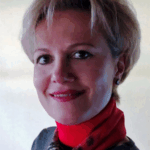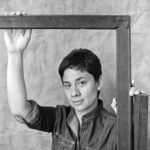The 2nd Edition of the Design Research Days – iD*25 – explores the transformative potential of design research in addressing complex global challenges such as climate change, social inequality, cultural fragmentation, and technological disruption. Drawing on the metaphor of “ Moving Mountains,” we argue that lasting change arises not through isolated solutions but through collective, creative, and adaptive processes.
Design research is presented as a systemic, participatory approach that enables communities and institutions to co-create responses rooted in real-world experience. By emphasizing creative diversity, the iD*25 highlights the value of inclusive, trans and multidisciplinary collaboration in generating innovative and context-sensitive outcomes. In addition, it foregrounds the importance of emergent change, an adaptive, iterative process that allows solutions to evolve over time in response to shifting conditions and insights.
The interdependence of ecological, technological, social, and cultural systems is a central theme. Design research is most effective when it embraces this complexity, fostering interventions that are not only innovative but also regenerative, just, and sustainable.
Ultimately, the iD*25 event, under the motto ‘Moving Mountains’, is a call to action for designers, artists, researchers, and communities to position and affirm Design as an artistic transformation practice, empowering all through shared creativity, reflective inquiry, and meaningful collaboration.
Speakers:

Prof. Dr. Emine KOCA
Ankara Haci Bayram Veli University
She is a Professor at Ankara Hacı Bayram Veli University, Faculty of Art and Design, Department of Fashion Design. She graduated from Gazi University Institute of Social Sciences, Clothing Industry and Clothing Education Department master program (2000), and Gazi University Educational Sciences Institute, Clothing Industry and Clothing Education doctorate program (2007). She became Associate Professor in 2011 and Professor in 2018.
Dr. Koca has many articles published in national and international refereed journals. Her research and publications focus on clothing culture and design; design theory and analysis, sustainability-based cultural and circular design practices and issues related to the social dimension of design. She has four co-authored books and numerous book chapters in her field. She has participated in many national and international scientific meetings, projects, fashion shows and mixed exhibitions with her original designs. She has two solo exhibitions focusing on design-based solutions based on cultural heritage.
She currently teaches in undergraduate and graduate programs, supervises Ph.D. and master’s students and conducts theses that include innovative designs that are the interaction of many disciplines. She continues her research and publications in her field regularly.

Prof. Dr. Fatma KOÇ
Ankara Hacı Bayram Veli University, Faculty of Art and Design, Department of Fashion Design.
She is working as an Professor at Fashion Design Department of Ankara Hacı Bayram Veli University, Faculty of Art and Design, Department of Fashion Design In 1991, she got a master’s degree about “A Research on Traditional Kütahya Women Clothing” and in 1997, she got the PhD with the thesis of “A Study of Children Clothing in the Period of Ottoman Empire”.
She has experience of both research and executive work on numerous projects at national and international level. She participated on numerous national and international art and design activity, personal exhibition, fashion shows and mixed exhibitions with own designs. She has four co-authored books and numerous book chapters in her field. She has participated in many national and international scientific meetings, projects, fashion shows and mixed exhibitions with her original designs. She is related art work relatest traditional Turkish marbling art, traditional Turkish felt art and fiber art and wearable artistic couture clothing designs.She has two solo exhibitions focusing on tradational based sustainable art on cultural heritage.
She currently teaches in undergraduate and graduate programs, supervises Ph.D. and master’s students and conducts theses. She has continues to academic studies that, clothing design, pattern cut, traditional clothing , history of fashion and history of Turkish clothing, fashion design and tradational Turkish art (felt and marbling) that cultural heritage. She continues her academic studies as a cultural heritage carrier and participates in national and international exhibitions with original clothing designs.
 Nuno Martins
Nuno Martins
School of Design of the Polytechnic University of Cávado and Ave
Nuno Martins holds a PhD in Digital Media (2013) at the University of Porto. In 2020 he completed a post-doctoral degree in Design. He also holds a MA in Multimedia Art (2007) and a BA in Communication Design (2003) at the Faculty of Fine Arts of the University of Porto. He is a Coordinating Professor of Communication Design at the School of Design of the Polytechnic University of Cávado and Ave and Director of the MA in Digital Design.
He is an Integrated Researcher of the Research Institute for Design, Media and Culture (ID+), focusing on the areas of Digital Media Design, Communication Design, Brand Identity, and Interface Design. At ID+ he is co-coordinator of the Territories and Communities research group (T+C) and Coordinator of the Identity, Community, and Intervention Design Laboratory (DICI). In 2017, he co-founded DIGICOM – International Conference on Design & Digital Communication, and is Conference Chair of this scientific event. He is member of the editorial board of several scientific journals and was editor of numerous scientific publications in the area of Communication Design, namely books of chapters and proceedings of international conferences.
As a designer, he has won several awards, namely: 3 Graphis Gold Award (2021, 2015 and 2014, USA); 2 Graphis Silver Award (2020 and 2014, USA); 1st prize – Mascot of the Oceanário of Lisbon; 1st prize – Mascot of the Water Pavilion of Porto; 1st prize – Porto Digital logo; 1st Prize “Winner Online” in the contest Webdesign 2004, promoted by ESTAL; and 1st Prize in the Contest “Papies 2006” (category “Papies of the Internet). Some of his design projects are published in over twenty books on Communication Design, published in Hong Kong, Germany, Spain, USA, Austria, Netherlands, France, China and UK.
 Tania de León Yong
Tania de León Yong
Academy of Media Arts Cologne
Tania de León Yong es artista visual e investigadora en artes, originaria de México. Su trabajo se ha centrado en el dibujo, la animación experimental y el grabado, áreas que ha explorado tanto desde la práctica artística como en numerosos proyectos de investigación.
En el ámbito académico, ha participado como responsable o co-investigadora en diversos proyectos de investigación financiados por instituciones nacionales e internacionales, explorando temas como la animación expandida, el dibujo en entornos virtuales, el tiempo en la imagen animada y los cruces entre arte, ciencia y tecnología. Su trabajo ha incluido colaboraciones con universidades en México, España, Colombia, India, Alemania y Portugal.
Sus filmes de animación han sido proyectados en festivales como el London Experimental Film Festival, Animac Lleida, Animasivo y el Festival de Cine Experimental de Bogotá, y ha participado en once exposiciones individuales y más de cincuenta colectivas en museos, bienales y ferias de arte en países como Canadá, Alemania, Polonia, Taiwán, Brasil y España.
Es licenciada en Artes Visuales por la ENAP-UNAM (1998), y cursó un máster en Aplicaciones Multimedia para Internet por la Universidad Politécnica de Valencia (2001). En 2005 obtuvo el grado de doctora en Bellas Artes por la misma universidad, dentro del programa Componentes expresivos, formales y espacio-temporales de la animación. Posteriormente, cursó la Maestría en Historia del Arte en la Facultad de Filosofía y Letras de la UNAM (2016). Y recientemente, concluyó un programa de posdoctorado en Media Artes en la Universidade da Beira Interior, en Portugal (2025).
Scientific coordination
Ana Margarida Ferreira, Universidade da Beira Interior
Flávio Almeida, Universidade da Beira Interior
Joana Casteleiro, Universidade da Beira Interior
Júlio Londrim, Universidade da Beira Interior
Lorenzo Imbesi, Universidade Sapienza de Roma e Associação Cumulus
Lucy Niemeyer, Universidade do Estado do Rio de Janeiro
Mónica Romãozinho, Universidade da Beira Interior
Nicos Souleles, Universidade Tecnológica do Chipre
Scientific Committee
Águeda Simó Cachorro, Universidade da Beira Interior
Aline Monçores, Universidade da Beira Interior
Ana Margarida Ferreira, Universidade da Beira Interior
Catarina Moura, Universidade da Beira Interior
Cátia Rijo, Instituto Politécnico de Lisboa
Cláudia Pedro Santos, Universidade da Beira Interior
Eduardo Gonçalves, IADE e Universidade da Beira Interior
Flávio Almeida, Universidade da Beira Interior
Francisco Paiva, Universidade da Beira Interior
Helena Gonçalves Grácio, Instituto Politécnico de Lisboa
Joana Casteleiro, Universidade da Beira Interior
Júlio Londrim, Universidade da Beira Interior
Lorenzo Imbesi, Universidade Sapienza de Roma e Associação Cumulus
Lucy Niemeyer, Universidade do Estado do Rio de Janeiro
Mónica Romãozinho, Universidade da Beira Interior
Nicos Souleles, Universidade Tecnológica do Chipre
Pinar Arslan, Ankara Haci Bayram Veli
Renata Ferraz, Universidade da Beira Interior
Rita Salvado, Universidade da Beira Interior
Roberta Barban Franceschi, Universidade Internacional de La Rioja
Sara Velez, Universidade da Beira Interior
PhD students
Ana Teresa de Oliveira Melo Marques, Universidade da Beira Interior
Armando Correia Alves da Silva, Universidade da Beira Interior
Catarina Isabel Teixeira Marquês, Universidade da Beira Interior
Daniel Luiz Michalack, Universidade da Beira Interior
Daniel Teixeira Baldaia, Universidade da Beira Interior
Estrela Filipa Mateus Nunes, Universidade da Beira Interior
Fátima Restolho Veríssimo, Universidade da Beira Interior
George Maciel, Universidade Federal de Pernambuco, Brasil
Haruna Ibrahim, Universidade da Beira Interior
Hernâni de Souza Santos Alves, Universidade da Beira Interior
Inês Fernandes Camano Garcia, Universidade da Beira Interior
Inês Pereira Lopes, Universidade da Beira Interior
João André Calado Bravo, Universidade da Beira Interior
João Braga Santos, Universidade da Beira Interior
João Pedro Ferreira Santos, Universidade da Beira Interior
Joaquim Elias Rijo Martins, Universidade da Beira Interior
Justina Semčenkaitė, Vilnius Art Academy, Lithuania
Leonel Afonso Rodrigues Amaral, Universidade da Beira Interior
Mariana Costa Beber Figueira, Universidade da Beira Interior
Natacha Ribeiro Pinto, Universidade da Beira Interior
Rui Filipe Soares Salgueiro, Universidade da Beira Interior
Sandro Daniel Gomes Gonçalves, Universidade da Beira Interior
Soraia Maduro, Universidade da Beira Interior
Tábata Paola Avilés Parra, Universidade da Beira Interior
Thais Longaray, Universidade da Beira Interior
Partners
Associação Cumulus
Universidade Ankara Haci Bayram Veli, Turquia
Universidade do Estado do Rio de Janeiro e PPGD/ESDI, Brazil
Universidade Tecnológica do Chipre e E-learning Lab – Design for Social Change, Chipre
Sapienza Universidade de Roma e SDR Sapienza Design Research, Itália
Support
Production
Marta Gomes Ferreira – Imagem gráfica
Thais Longaray – Design visual
Localização
MUSLAN – Museu de Lanifícios
Museu de Lanifícios da Universidade da Beira Interior
Real Fábrica Veiga/Centro de Interpretação dos Lanifícios
Calçada do Biribau, s/n (ao Parque da Goldra)
6201-001 Covilhã (Portugal)
